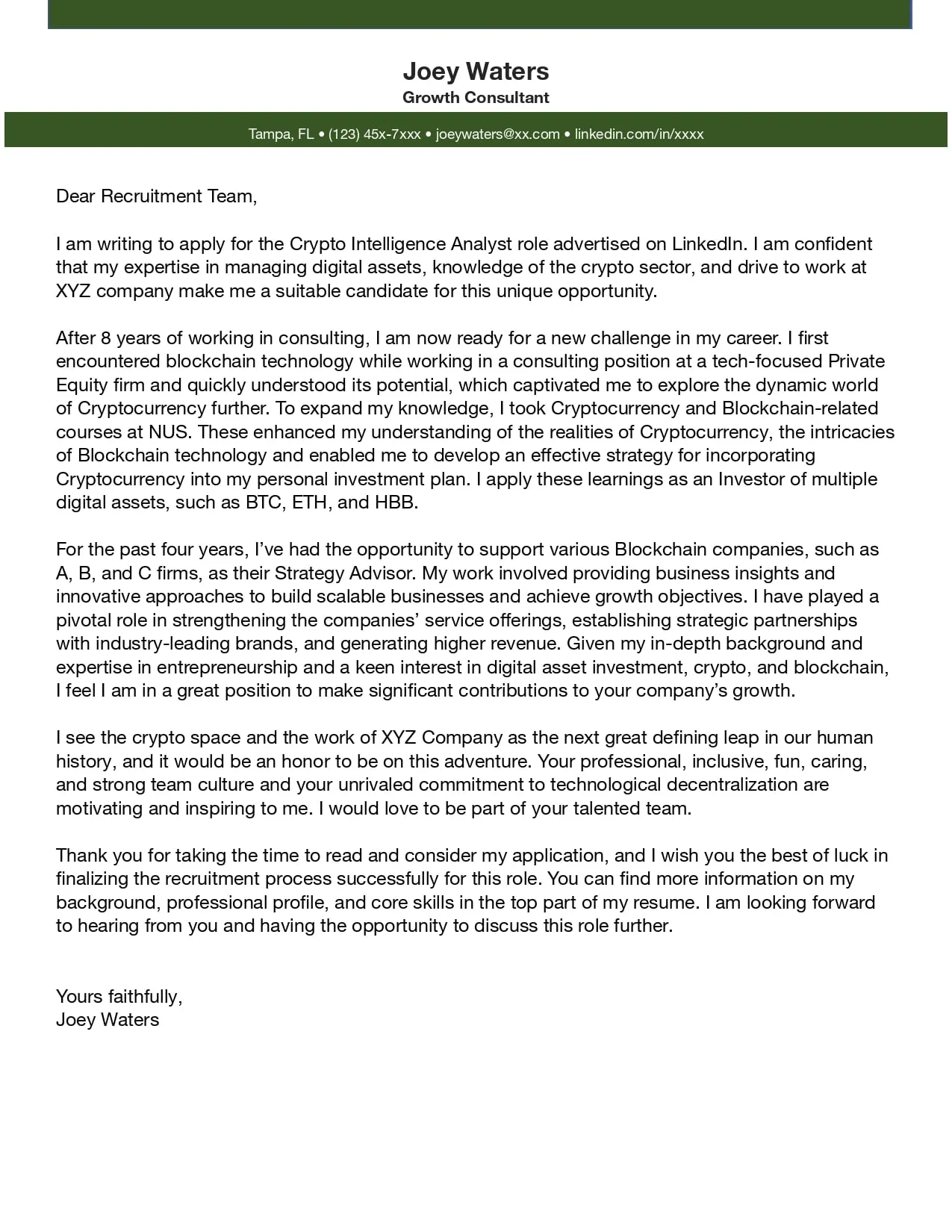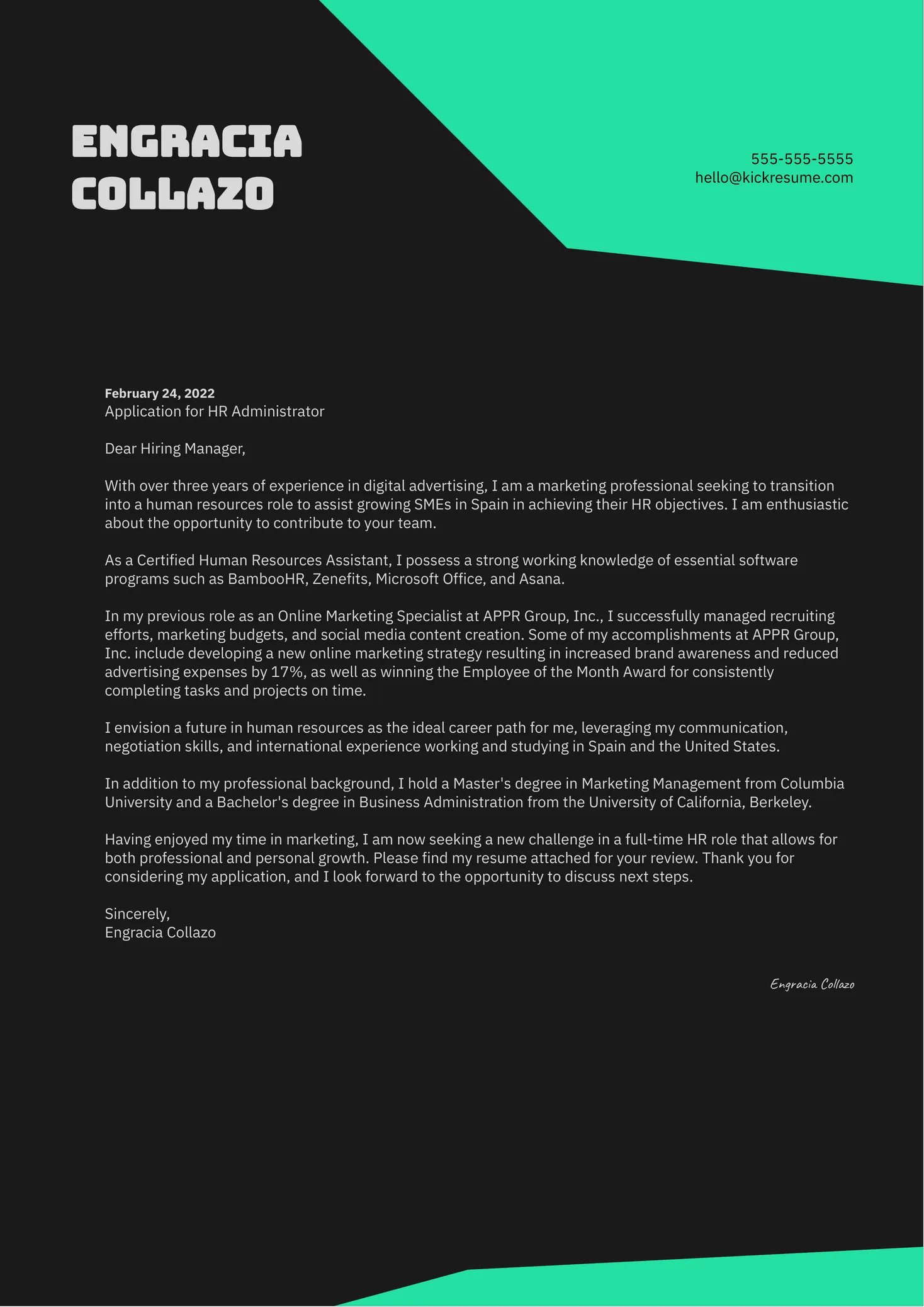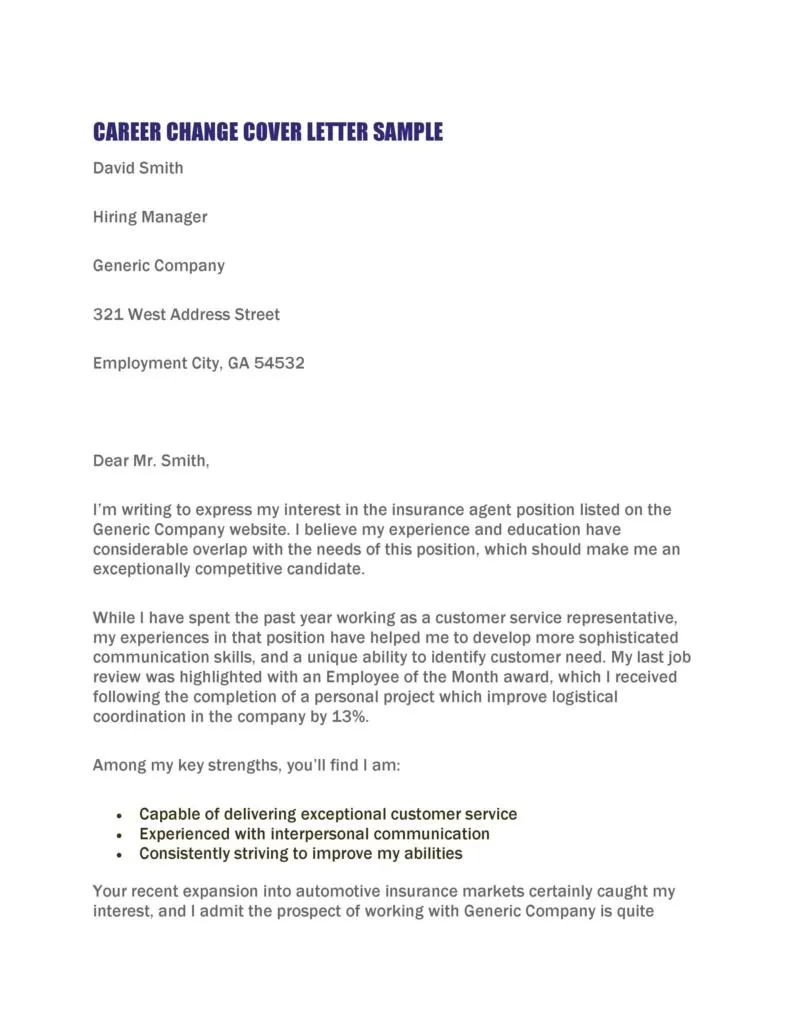Crafting a Compelling Career Change Cover Letter
Changing careers is a significant life event, and your cover letter is your first impression. It’s your chance to convince a potential employer that you’re the right fit, even if your experience doesn’t perfectly align with the job description. This is where you need to craft a cover letter that stands out, highlighting your transferable skills and demonstrating your genuine interest in the new role and company. A well-written cover letter is not just a formality, but a strategic tool that can open doors and position you as a strong candidate.
Highlighting Transferable Skills
One of the most crucial aspects of a career change cover letter is emphasizing your transferable skills. These are the skills you’ve developed in previous roles that are relevant to the new position. Think about skills such as communication, problem-solving, leadership, and time management. Identify how these skills translate and apply to the new role. For instance, if you’re transitioning from project management to marketing, highlight how your project management skills can be used to manage marketing campaigns and ensure they stay on schedule and within budget. Clearly demonstrating this connection is vital.
Identifying Relevant Skills

To effectively highlight your transferable skills, start by carefully analyzing the job description. Identify the key skills and qualifications the employer is looking for. Then, reflect on your past experiences and pinpoint the skills that align with those requirements. It’s not enough to simply list these skills. You need to provide concrete examples of how you’ve utilized them in the past and the positive outcomes you achieved. This helps to showcase that you’ve not only developed these skills, but can also apply them to the responsibilities of the new role, making you a valuable candidate.
Showcasing Achievements
Don’t just list your responsibilities; showcase your achievements. Use quantifiable data to demonstrate your successes. Instead of saying, ‘Managed social media accounts,’ say, ‘Increased social media engagement by 30% in six months by implementing a new content strategy.’ Quantifiable achievements provide concrete evidence of your capabilities and make your cover letter more compelling. Whenever possible, use numbers, percentages, or specific metrics to illustrate your accomplishments and the value you brought to previous roles. This allows the hiring manager to clearly understand your potential impact.
Structuring Your Career Change Cover Letter
A well-structured cover letter is easy to read and understand. It should follow a logical flow that engages the reader from the start. Clarity and organization are crucial, especially when you’re trying to convince an employer that your skills are transferrable. Structure your cover letter with a clear header, an impactful opening paragraph, concise body paragraphs highlighting your skills and achievements, and a strong closing that reiterates your interest and calls for action. A well-structured letter shows you’ve taken the time to prepare and are serious about the opportunity.
Header and Salutation

Start with a professional header that includes your contact information. Always address the hiring manager by name. Research the company and find the name of the person in charge of hiring. A personalized salutation demonstrates that you have taken the initiative to learn more about the role and the company. If you can’t find a name, use a general greeting like ‘Dear Hiring Manager.’ Avoid generic greetings like ‘To Whom It May Concern’ as they make your letter appear less personalized.
The Opening Paragraph Making an Impact
The opening paragraph is your opportunity to grab the reader’s attention. Start with a strong statement that immediately captures the reader’s interest. Briefly state the position you are applying for and how you learned about the opportunity. Then, make a compelling statement about why you are interested in the role and the company. Mentioning a specific aspect of the company that interests you or referencing a relevant achievement can make your opening paragraph stand out. This will make the hiring manager interested in reading the rest of your letter.
Body Paragraphs Connecting the Dots
The body paragraphs are where you connect your past experience to the new role. Use these paragraphs to highlight your transferable skills and achievements. Provide specific examples that demonstrate how your skills and experiences align with the job requirements. Break down your experiences into concise, well-structured paragraphs, making it easy for the hiring manager to quickly grasp your qualifications. Don’t just list skills; tell a story. Illustrate how you used those skills to overcome challenges or achieve goals in your previous roles. This helps the reader understand the practical value of your abilities.
The Closing Call to Action

Your closing paragraph should reiterate your interest in the position and the company. Summarize why you believe you are a good fit and what value you can bring to the role. End with a clear call to action, such as requesting an interview or expressing your availability for a discussion. Thank the hiring manager for their time and consideration. A strong closing leaves a lasting positive impression and encourages the hiring manager to take the next step.
Tailoring Your Cover Letter
Generic cover letters rarely impress. Tailor your cover letter to each specific job application. This involves researching the company, analyzing the job description, and adapting your letter to highlight the most relevant skills and experiences. The more personalized your letter, the more likely it is to stand out. It shows that you’ve taken the time to understand the role and the company’s needs. This personalization is a key factor in catching the hiring manager’s attention and securing an interview.
Researching the Target Company
Before you start writing, research the company. Understand its mission, values, and current projects. This information will help you tailor your cover letter to demonstrate how your skills align with the company’s objectives. Visit the company’s website, read recent news articles, and review their social media profiles. The more you know about the company, the better you can align your cover letter with their specific needs and culture. Mentioning specific company initiatives or values shows you’ve done your homework and are genuinely interested in the role.
Adapting to the Job Description

Carefully analyze the job description. Identify the key requirements, skills, and qualifications. Use the job description as a guide to tailor your cover letter. Highlight the skills and experiences that directly address the employer’s needs. Use the same keywords and phrases from the job description to make your application more easily searchable by applicant tracking systems (ATS). This ensures that your application is seen by a human and makes it easy for the hiring manager to see why you’re a good fit.
Proofreading and Formatting Your Letter
Proofread your cover letter carefully for any grammatical errors, spelling mistakes, or typos. Even a small error can undermine your credibility. Use a grammar checker and have a friend or family member review your letter. Ensure your cover letter is well-formatted and easy to read. Use a professional font and appropriate spacing. Maintain consistency in your formatting throughout the document. A well-formatted and error-free cover letter demonstrates your attention to detail and professionalism. A polished letter indicates you care about your application and want to make a great impression.
